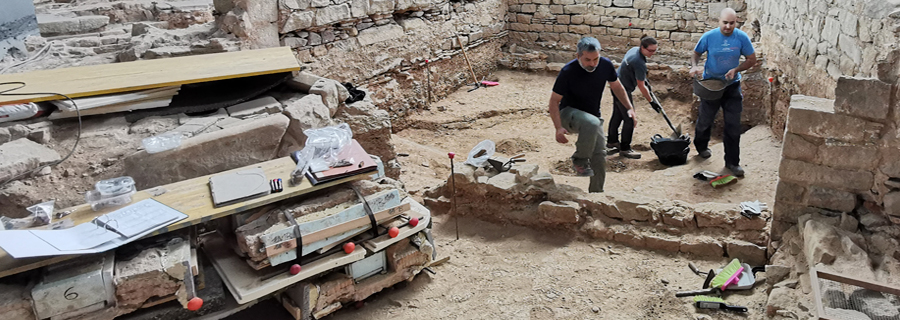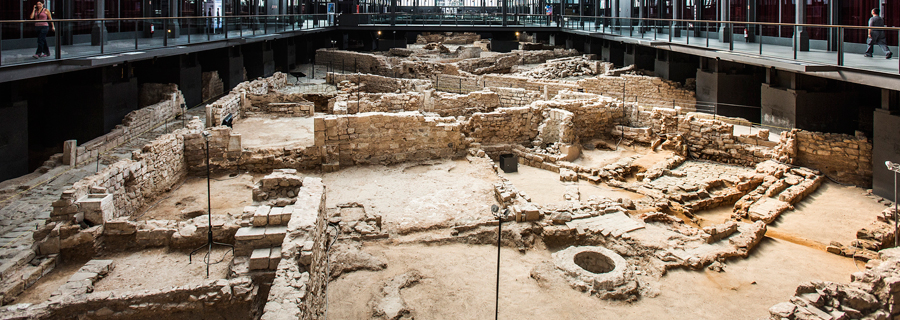Growth, defeat and post-war
A SINGLE SITE
Contemplating the site of the Old Mercat del Born is to make an approximation to the daily life of Barcelona in the late 17th and early 18th centuries, and is to step on the streets of the city that resisted the siege of the troops of Felipe V until the capitulation of September 11, 1714.
This is a unique and exceptional archaeological space: by size, by the state of conservation, by the historical sequence it presents and because historical documentation has allowed the families who lived there to be named.
HISTORICAL CONTEXT

From the archaeological remains excavated around and inside the old El Born market you can explore the history of Barcelona from Roman times to the beginning of the 18th century, when life in this part of the city was suddenly interrupted by the outcome of the War of the Spanish Succession.
-
The streets
Inside the Born site we have part of the 42 streets destroyed by the construction of the Ciutadella and its security esplanade, specifically sections of up to nine different roads are documented.
-
Houses and workshops
In the Born site you can see the remains of 60 houses distributed in 11 different islands. Some of these islands are only partially found, as they extended outside the boundaries of the old market.
-
The sectors of the site
In the site there are three very different parts that perfectly represent the complexity of the urban and social fabric of the Ribera district from the 13th to the 18th century.
-
The County Rec
The Rec Comtal is one of the key pieces of the site, since it marks the urbanism of the western half and is vital for the development of the artisanal activities documented at this point in the Ribera neighborhood.
ARCHAEOLOGICAL INTERVENTIONS

When we talk about the El Born site, we often think of the 8,000 m2 of urban fabric stopped in time that is located in the subsoil of the old market, but from an archaeological point of view, the site would encompass the entire area demolished by the construction of the Ciutadella and the esplanade, in total more than 295,705 m2.
Despite the extent and spectacularity of what can be seen today, the El Born site is a site that has not been exhausted either in surface, depth or research. The ArqueoBorn program raises several branches of research in this regard.



